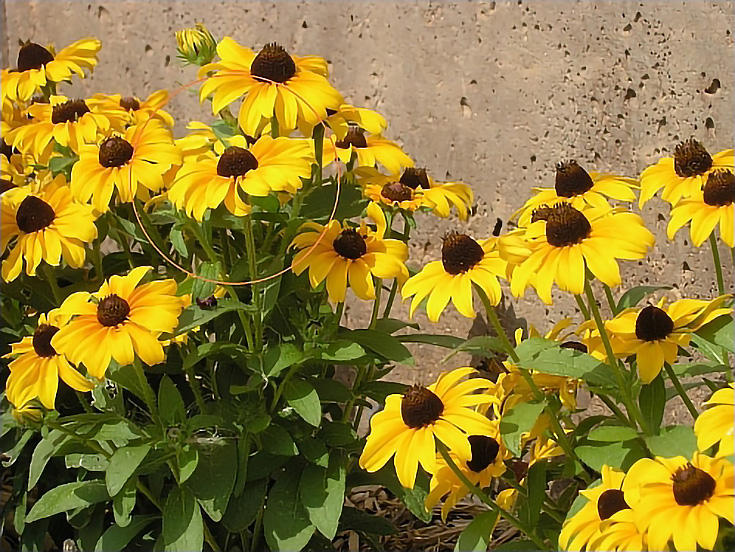No matter what medium you use, I believe every artist can benefit from practicing 4 specific skills.
What are these skills? I’m glad you asked! Here are (in my opinion) the top 4 must-have skills for artists:
1. The ability to see
This is so basic to art that we don’t often think about it, but it’s vital enough that we periodically need to be reminded exactly how it works. And there’s a huge difference between perceiving something and really seeing it.
Here’s a quick, obvious example of the difference between those two words: you can “perceive” the red car that just went flying past you, but you really didn’t take time to “see” it.
The type of seeing I’m talking about is to take the time—whether that means a second look, or a third, or a fourth—to actually note the visual differences that set something apart from all of its fellows. In short, to study it.
A quick glance at the photo of flowers below shows a batch of yellow, daisy-like flowers. Our minds are trained to just see “flowers” and move on.
But if you really look at the flowers—if you really see what’s actually there—you’ll discover that the flower I’ve circled has characteristics that set it apart from all the others.
You could also find unique details in each of the other flowers if you took the time to examine them. That’s the type of “seeing” that artists need to develop.
2. The ability to draw what’s in front of you
It’s easy to fall into the habit of drawing what you think you’re looking at, instead of drawing what you actually see.
If you happen to focus on a particular subject—let’s say your specialty is dogs—you need to take the time to draw the specific dog, not a generalization of a dog or even that particular breed of dog.
This is important because no two dogs are the same, even if they’re the same breed. Hair growth patterns differ. Markings differ. There are a hundred other details that only an owner would notice. Get even just a few of those details right in a portrait and you’ll have a happy client.
Even among flowers, like the ones above, drawing all the flowers the same way would make for an boring composition. Paying enough attention to draw each flower as an individual makes for a much more interesting (and truthful) drawing.
3. The ability to promote your art
I know, I know. Many artists are introverts at some level. “Just leave me alone and let me draw (or paint or sculpt or whatever).” That’s me, anyway. I’d give almost anything to stay home rather than go to an art show and try to sell my work to other people.
But even if you have a gallery representing you, you need to know how to promote your work because you will have to attend gallery openings if you’re a featured artist.
What does promoting look like?
Maybe it’s not what you think. :) In truth, promoting is just being able to do the following:
Share your inspiration – What drew your attention to a subject? Is there a story behind it? If so, practice telling that story. Potential art buyers love to hear a story because it gives a specific work of art additional or special meaning. If they happen to have a similar experience in their life, they’re even more likely to buy the artwork.
Talk about your process – I don’t mean a step-by-step dissertation, but a few words about how you paint or draw or some of the more interesting details can be of interest to a potential art buyer or anyone who has a passing interest in art.
Convey your passion for your subject – If you can connect with art viewers on a gut level—the smell of flowers, their color and variety, for example—viewers may be converted to buyers. Or even long-term collectors.
Give studio tours or hold open studios – Some artists make it a practice to have an open studio once a year, usually in conjunction with some other local event. These are great opportunities for letting the public get a look at your creating environment and maybe see you working.
4. The ability to say “no”
This may seem like an odd skill to list after I’ve talked about promotion, but it’s definitely an important skill to develop.
People will always want things from you that you can’t provide or that are counterproductive to your art career or business. Here are a few that come to mind:
• Charitable donations
• Commissions for subjects outside your area of expertise
• Too many commissions
Your time is precious. It takes time to create each artwork in your studio, and besides, you need time to live your life outside the studio, as well.
Learning to protect your time by (courteously) refusing certain projects is hands-down one of the best skills for an artist to have.
Of course, there are many other skills that will help you succeed in your artistic journey. . . too many to list, in fact. But if you nail these four—or even just try to improve on them in the next year or so—you’re likely to see fantastic results in the art you make and in your career as an artist.
This post may contain affiliate links.

